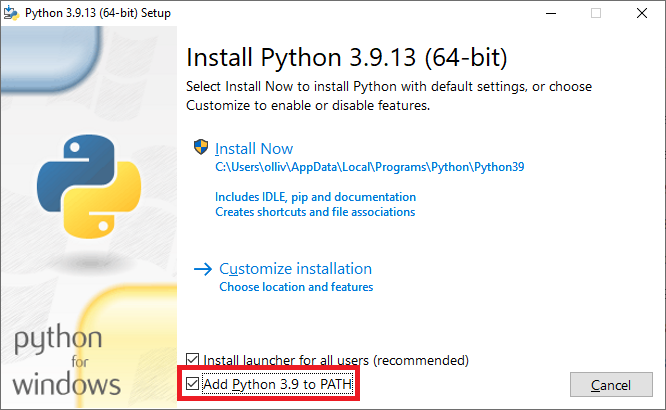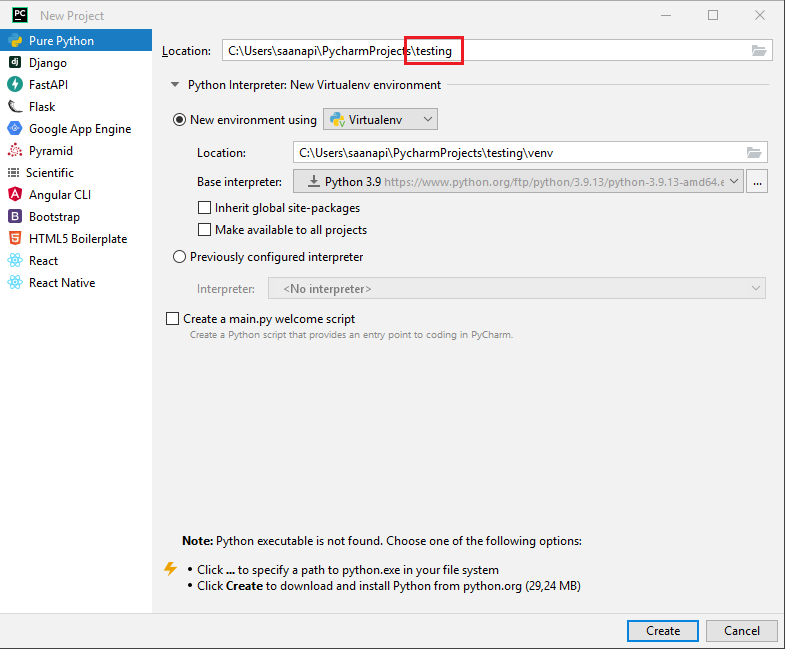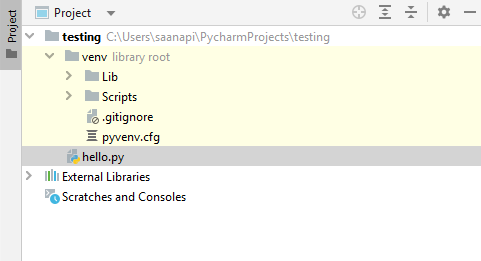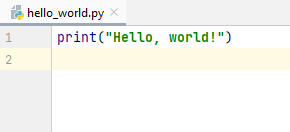python
First program
Welcome to study the Python programming language in Metropolia University of Applied Sciences!
… and the same in Python:
print("Welcome! Let's start learning Python programming!")
Python is one of the most popular programming languages in the world. When studying Python, you can:
- learn to program in a fun and easy way
- program with high-quality, user-friendly development tools
- create impressive graphics with visualization libraries
- apply artificial intelligence into your programs with extensive machine learning libraries
On your first year in Metropolia, you will acquire strong basic skills in Python programming. In future studies you will deepen your knowledge in the Python language and learn to use Python efficiently in software development projects.
In this first module, you will install the Python development tools and learn to write and run your first Python program.
Installation of the Python Interpreter
First, we install the Python interpreter. The Python interpreter is a program that translates the Python language statements in a program one at a time into instructions accepted by the computer’s central processing unit (CPU).
The installation of the Python interpreter proceeds as follows:
- Navigate to https://www.python.org/downloads/ with your browser.
- Select Downloads / All releases.
- Scroll to the section titled Looking for a specific release?. Click Download for the version of your choice (any version between 3.7.X and 3.9.X should do). The minor revision number X can be any number.
- Download the Python interpreter by clicking the link Windows installer (64-bit) at the bottom of the page. The wizard will guide you in the installation process. It is recommended to use the default folder for the installation.
Important: The guided installation process provides the opportunity to add
the Python interpreter to the PATH environment variable in the Windows operating
system. This environment variable contains a list of directories that the operating
system automatically searches for executable programs. Adding Python to the PATH
is recommended because it allows you to use the python command from any directory
in the command prompt, and the Python interpreter will be found automatically.
(This is beneficial for the upcoming Hardware 1 and 2 courses, where Python is also used.)
The following image shows the checkbox from which the addition is made:

On this course, we also use MariaDB databases. At the time of writing (August 2022), the MySQL Connection/Python database driver will not support the newest Python 3.10 versions. For this reason, it is recommended that you install a slightly earlier Python version (e.g. version 3.9.) that has guaranteed support. If you choose to install the newest Python version now, you may later need to install another, earlier version to coexist in your computer.
Installation of the IDE
Next, we install the development environment (IDE), which is short for Integrated Development Environment. IDEs are professional software tools used for writing, executing, and testing program code.
On this course we are using the JetBrains PyCharm IDE. Please follow these instructions to install PyCharm:
- Navigate to https://www.jetbrains.com/
- Select Developer tools / PyCharm ja click Download.
- Select the Professional version to download.
- To use PyCharm, you must create a JetBrains account with your Metropolia email to acquire a free student license. The student license is active for one year at a time. The installation tool helps you register your account. To acquire the software license, click the shopping cart icon at the top of the JetBrains website and select Special offers / For students and teachers. Remember to use your Metropolia email, and complete the registration by following the instructions in the activation email. When your license is about to expire after the first year, you will automatically receive instructions to your email on how to renew your license.
Once your installation is finished, you can open PyCharm by clicking at the PyCharm icon on your computer.
Creating a new project and a Python source file
Before you can start writing programs, you must create a new project. A project is a bit like a suitcase where you can store programs focused on the same topic. For example, you can create a new project called ‘Learning Python’ for your first Python programs. The name of the project is written at the end of the file path.

By default, a new project is created under a virtual environment (venv). Virtual environments help the management and version control of software packages required by programs.
When you select Create, the IDE prompts you whether you want to open the new project in a new window. You can select either option.
A project tree opens on the left side of the screen, showing you all the files that belong to the project.

Each program is written in a file under the project’s directory. For the first program, you can create a new file by right-clicking the project name under the project tree.
Then select New / Python file and write the name for the new file in the popup window. You can name the first file hello. A new file with the name hello.py is now
seen is the project tree. File extension .py is characteristic of Python program files.
Writing, saving and running a program
A program, or Python source code, is written in the editor field:

You can execute, or run, a program by right-clicking the editor field and selecting Run ‘hello’.
Output will be shown in the console window at the bottom of the screen.
Hello, world!
If there are errors in your program, don’t worry! You will get an error message that helps you find the source for the error. You can edit the program as many times as you need and run it over and over again.
Making errors is part of programming. It has been estimated that 80% of the work time of a professional programmer is used for troubleshooting and fixing errors. Making errors also helps you learn. Every time you run into an error, find it, and fix it, you have become a bit better at programming.